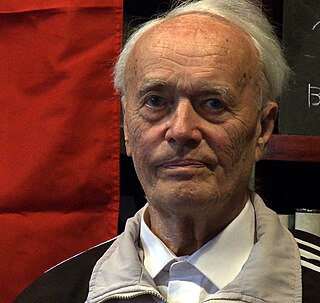Related Research Articles

Gunnar Jahn was a Norwegian jurist, economist, statistician, politician for the Liberal Party and resistance member. He held several important positions, such as Norwegian Minister of Finance and Customs from 1934 to 1935 and in 1945, chair of the Norwegian Nobel Committee from 1941 to 1966 and Governor of the Central Bank of Norway from 1946 to 1954.
Olaf Solumsmoen was a Norwegian newspaper editor and politician for the Labour Party.

Nils Christoffer Bøckman was a Norwegian lieutenant-colonel and businessperson.

Otto Nielsen was a Norwegian songwriter, revue writer, cabaret singer and radio personality. He participated in Norwegian cultural life for five decades, starting from the 1930s, and played an important role behind the scene as program manager for the radio program series "Søndagsposten" for over twenty years.
Erling August Moi was a Norwegian resistance member of World War II.
Richard Andvord was a Norwegian cavalry officer, diplomat and aide-de-camp for the Norwegian royal family.
Egil Reksten was a Norwegian engineer and resistance member during World War II. He is best known as leader of the illegal radio post Skylark B.

Haakon Sørbye was a Norwegian engineer and resistance member during World War II. He was a member of the radio group Skylark B during the war. After the war he was a professor at the Norwegian Institute of Technology.
"Theta" was a radio communications group that operated in Bergen, Norway during the German occupation of Norway, communicating with the British Secret Intelligence Service (SIS). The group was operative from December 1941 to June 1942.

Johan Christian Schreiner was a Norwegian historian. He was a professor at the University of Oslo, and his speciality was the Middle Ages.

Anton Wilhelm Brøgger was a Norwegian archaeologist.
Thorleif Oscar Karlsen was a Norwegian police inspector and politician, who also became known through the radio program Trafikk og musikk.

Endre Qvie Berner was a Norwegian organic chemist, author and educator.

Julius Hougen was a Norwegian jurist and radio personality. He became known as the voice from Sørlandet over a period of more than forty years, eventually as a leader of the Norwegian Broadcasting Corporation's district office in Kristiansand.

Per Bang was a Norwegian journalist. He worked in Dagens Næringsliv from 1946 to 2006, and became known for his column På nattbordet.

Jahn Otto Johansen was a Norwegian journalist, newspaper editor, foreign correspondent and non-fiction writer.
The milk strike was a strike in Nazi-occupied Oslo on 8 and 9 September 1941. It led to strong reprisals from the German occupiers, in the form of martial law, court-martial, mass arrests, two executions and several long-term jail sentences.
Ivar Heming Skre was a Norwegian resistance member.
Ole Siem was a Norwegian naval officer, businessman and politician.
Nina Owing is a Norwegian news anchor.
References
- 1 2 Giertsen, Børre R., ed. (1967). Pressefolk (in Norwegian). Oslo: Norwegian Press Association. p. 183.
- ↑ Giertsen, Børre R., ed. (1946). Norsk fangeleksikon. Grinifangene (in Norwegian). Oslo: Cappelen. p. 511.
- ↑ Ottosen, Kristian, ed. (2004). Nordmenn i fangenskap 1940–1945 (in Norwegian) (2nd ed.). Oslo: Universitetsforlaget. p. 730. ISBN 82-15-00288-9.
- 1 2 "Per Øisang død". VG (in Norwegian). 13 January 1967.
- ↑ Allern, Sigurd (2004). "Fra politikermakt til journalistmakt. Programlederrollen i fjernsynsvalgkampen 1961–2001". In Aardal, Bernt; Krogstad, Anne; Narud, Hanne Marthe (eds.). I valgkampens hete: strategisk kommunikasjon og politisk usikkerhet (in Norwegian). Oslo: Universitetsforlaget. ISBN 82-15-00629-9.
- ↑ "Per Øisang ble utenriksmedarbeider i TV". VG (in Norwegian). 16 December 1964.
- ↑ Øvrebø, Olav Anders; Bastiansen, Henrik G. (22 December 1995). "Jahn Otto Johansen". Morgenbladet (in Norwegian). Retrieved 16 March 2009.